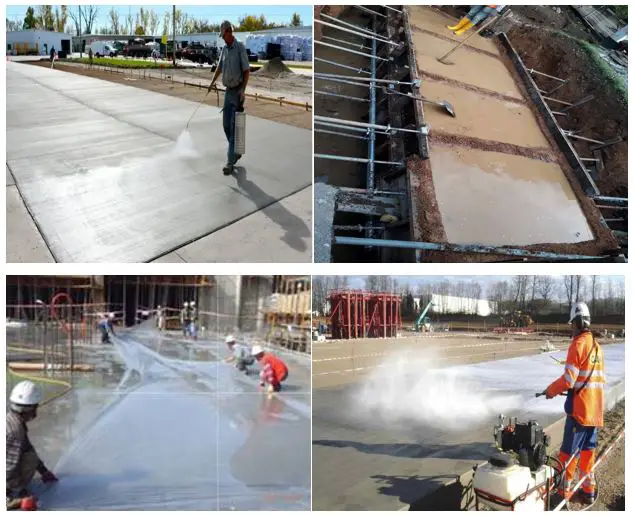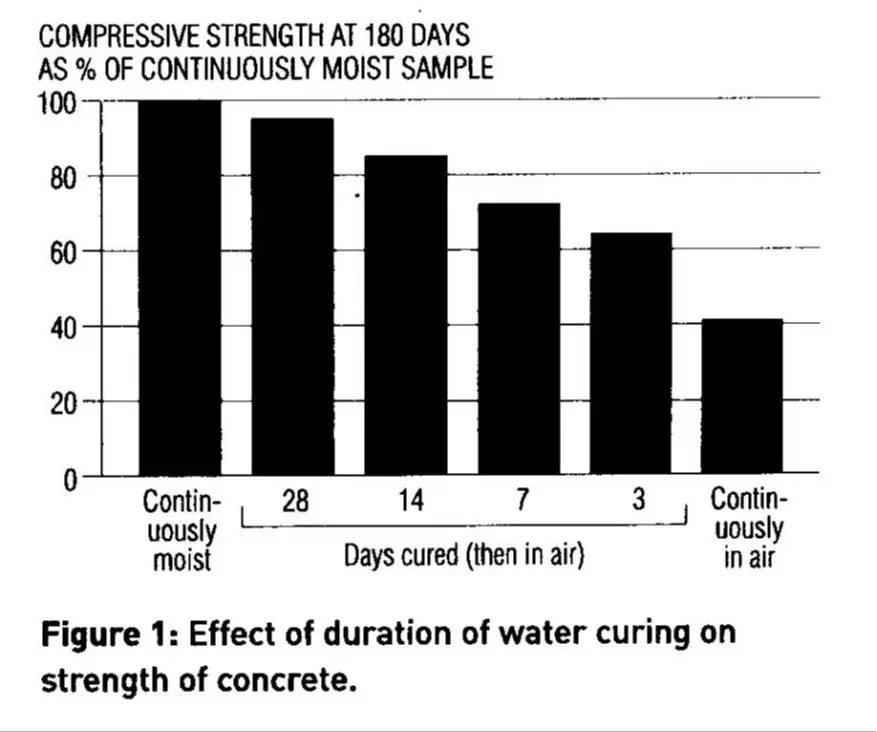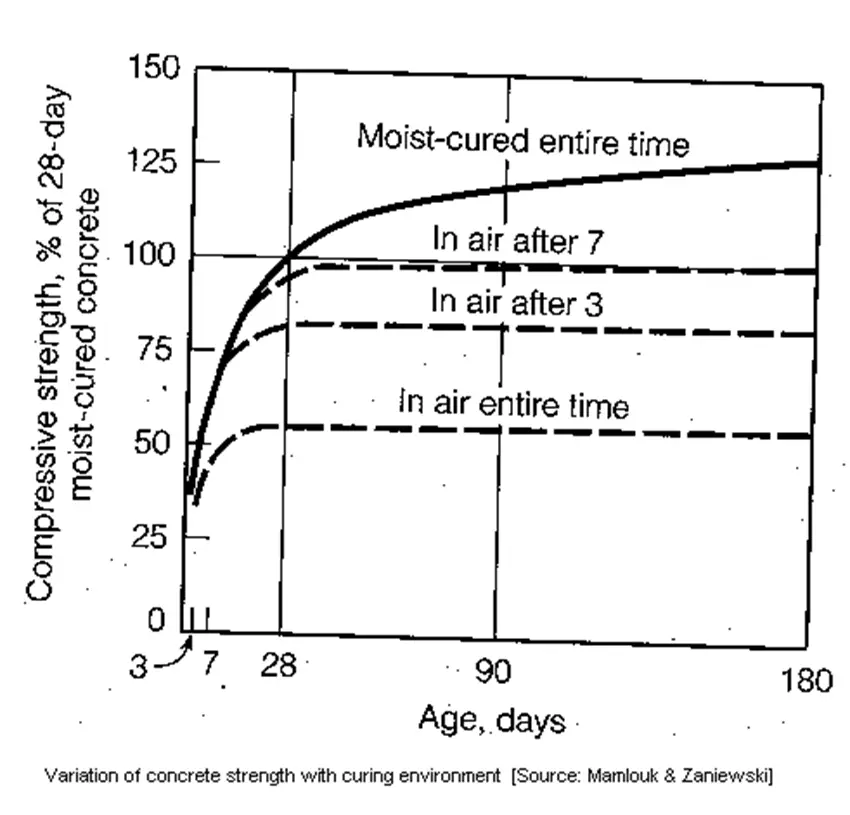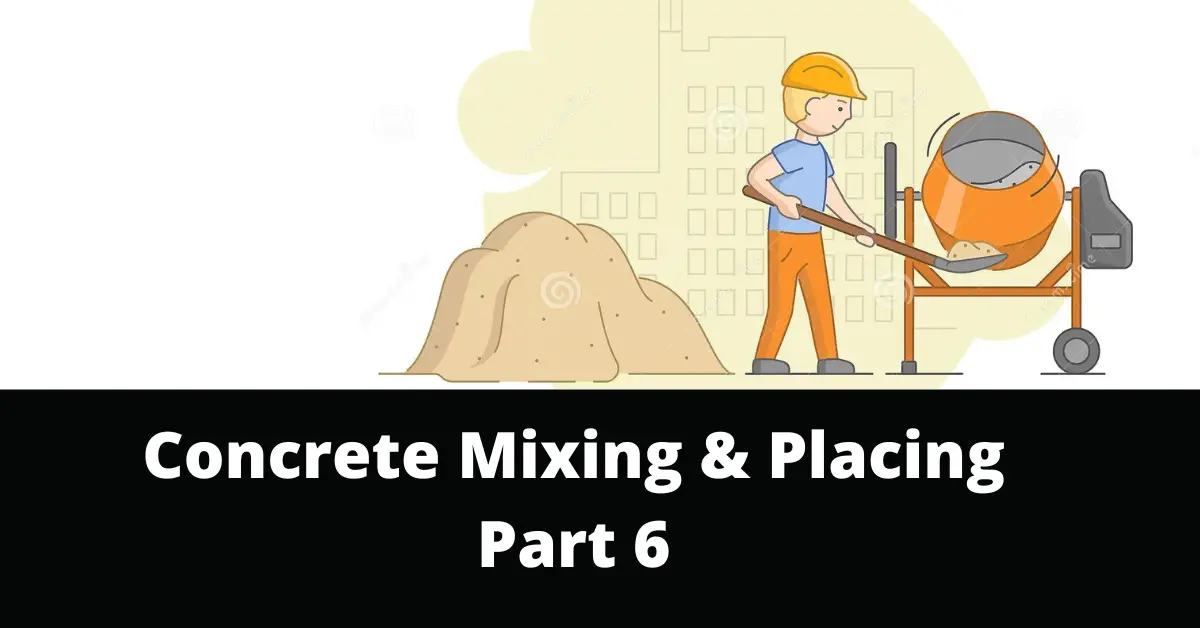This article will bring you the procedure for mixing and placing concrete in detail.
For a better understanding, read part 5 here.
Table of Contents
Finishing
Finishing refers to the treatment of exposed concrete surfaces to achieve the desired appearance, texture, or wear characteristics.
Typically, horizontal surfaces are exposed and must be finished prior to the concrete hardening.
Timing is crucial, as finishing must be performed when the concrete is neither too hard to work with nor too soft that the desired finish will be lost.
Worked finishes
Work on fresh concrete.
Do not wet concrete surfaces in order to facilitate surface work.
Unless otherwise instructed, do not strew materials across work surfaces.
Tamped finish: Using the edge of a board or beam, tamp the surface of a concrete slab to create an even texture of parallel ribs.
Brush finish: After the surface has been leveled and the sheen has nearly vanished, draw a brush across the surface in parallel lines to create a uniform texture, ensuring that each stroke of the brush is uninterrupted.
Cutting holes and chases
Before you can cut holes and grooves in hardened concrete, you must obtain permission and detailed instructions.
Care must be taken so that the structural integrity is not compromised.
It is particularly important to avoid indiscriminate cutting and, in particular, to protect the concrete’s reinforcement and face.
Curing
Start the curing process as soon as the finishing is complete, and properly the continuance of the curing process.
Since the hydration of cement takes days or even weeks rather than hours, the concrete must be cured for a sufficient amount of time if it is to attain its maximum strength and durability.
Curing is primarily intended to maintain the concrete’s moisture by preventing its loss of moisture during the period when it is gaining strength.
Control the temperature of the hardening concrete.
Avoid plastic shrinkage cracking.
Prevent damage.
The more severe the weather, the greater the need for caution.
Lack of curing reduces the concrete’s durability and abrasion resistance.
By spraying a suitable chemical curing agent (such as wax), or a combination of such methods.
Curing is accomplished by continuously wetting the exposed surface to prevent moisture loss.
Ponding or spraying the surface with water are common methods for accomplishing this.

Method of covering concrete
In any case, ensure that the method
a) effectively prevents water evaporation.
b) does not mark visible surfaces in the finished work, such as concrete and other building materials or finishes.
c) in cold weather, provides adequate insulation in the covering.
d) is fastened securely to prevent wind removal.
Do not walk on covered surfaces until the curing process is finished.
The bond between the concrete and other structural finishes can be affected by sprayed finishes.
Hot weather
During curing, use screens or covers to protect the concrete from the sun and winds, which can cause excessive drying.
To prevent wind funneling, make sure the covers are securely fastened around the edges.
Covering the concrete with hessian and spraying it with water is not recommended.
During curing, use screens or covers to protect the concrete from the sun and winds, which can cause excessive drying.
To prevent wind funneling, make sure the covers are securely fastened around the edges.
Covering the concrete with hessian and spraying it with water is not recommended.
Effect of Duration of Curing on Properties of Concrete
The strength of concrete is affected by a number of factors, one of which is the length of time it is kept moist, i.e., cured.
The graph depicts this by comparing the strength of concrete with surfaces that have been kept moist for 180 days; kept moist for varying periods of time and allowed to dry; and allowed to dry from the time it was made.

As shown in this example, concrete that is allowed to dry out immediately achieves only 40% of the strength of the same concrete that is water cured for the full 180 days.
Even three days of water curing raises this figure to 60%, and 28 days of water curing raises it to 95%.
Keeping concrete moist is thus a highly effective method of increasing its ultimate strength.

Early strength gain in concrete is critical where steam curing can be advantageous.
Steam curing can be accomplished in two ways:
- Curing in atmospheric pressure live steam (for enclosed cast in place structures and manufactured precast units).
- Curing in high-pressure steam autoclaves (for small manufactured units).
Because hydration is always a thermally dependent process, a controlled environment, in addition to the right environment, aids in the curing of freshly cast concrete.
High temperatures help accelerate hydration, while low temperatures slow it down.
Temperatures below 50 F (10 C) are bad news because concrete hydration virtually stops when temperatures fall below 40 F (4.5 C).
Temperature has such a large impact on hydration that an increase of just 18 F (10 C) is enough to double the rate of hydration.
The higher the curing temperature, the faster the hydration, the greater the strength gain, and, in general, the shorter the cure time.
Excessive evaporation of water can cause inadequate hydration. Permeability of strength-loss concrete is caused by poorly hydrated (cured) concrete.











